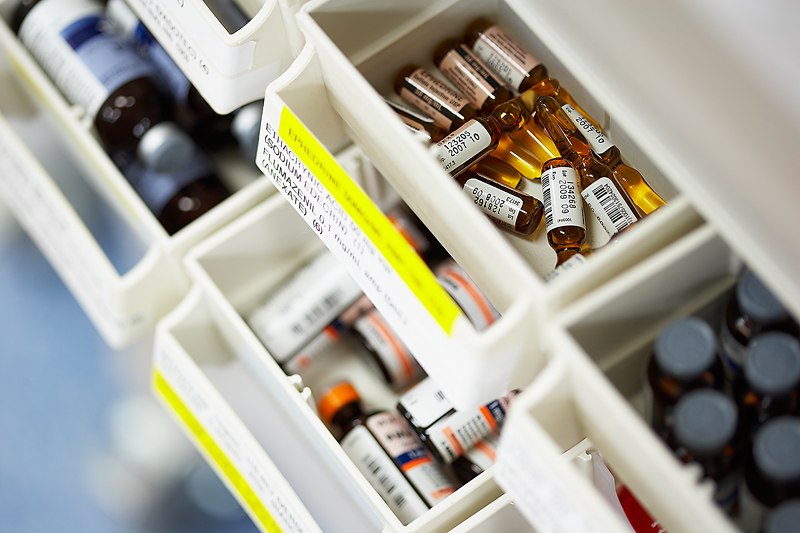
TUESDAY, May 21 (HealthDay News) — Finding early signs of lung cancer was once next to impossible, but a new study adds to a growing body of evidence suggesting that screening with low-dose CT scans may help spot the beginnings of disease in high-risk patients.
Among patients considered at the greatest risk for lung cancer, 6 percent were found to have lung cancer after getting CT scans and follow-up biopsies to confirm the diagnosis. CT scans detect abnormalities at an earlier stage than standard X-rays, potentially giving patients a head start on lifesaving treatment.
As more advanced technology reduces the radiation risk of computerized tomography (CT) scans, the benefits of such screening could become greater than the downsides, which also include potentially unnecessary biopsies.
“It may someday be like using mammograms,” said Dr. Stephen Machnicki, associate chair of radiology at Lenox Hill Hospital, in New York City.
The study affirmed what a lot of radiologists believe: There is a role for low-dose CT in screening for lung cancer, said Machnicki, who was not involved with the research.
The study, scheduled for presentation Tuesday at the American Thoracic Society annual meeting in Philadelphia, was based in part on results from the National Lung Screening Trial. That study, published in the New England Journal of Medicine in 2011, included more than 53,000 heavy smokers and found that those who received low-dose CT scans had a 20 percent lower risk of death from lung cancer than people who had standard chest X-rays.
Lung cancer, the leading cause of cancer deaths in the United States, usually forms in the cells lining air passages of the lungs. According to the U.S. National Cancer Institute, more than 228,000 new cases of lung cancer and almost 160,000 associated deaths are anticipated this year.
The researchers enrolled 84 patients between 61 and 65 years old. Participants had either a smoking history of more than 30 pack-years, or 20 pack-years and one additional risk factor, such as occupational exposure to cancer-causing substances or a personal or family history of cancer or chronic obstructive pulmonary disease (COPD). A pack-year represents the number of cigarettes smoked over time; 30 pack years is the equivalent of a pack a day over 30 years or two packs a day over 15 years.
Each study participant got a low-dose CT scan, which was reviewed for the presence of nodules or other abnormalities that could suggest cancer. Those with nodules of 4 millimeters or larger or opacities (cloudy areas of tissue) were advised to get a biopsy.
Four people had lung cancer confirmed by biopsy, and one had a large mass but refused biopsy, reported study author Sue Yoon, a nurse practitioner in the pulmonary division at the Veterans Administration Boston Healthcare System.
While the new study found that 6 percent of the study participants had lung cancer, the earlier trial found only about 4 percent did, Yoon added.
Yoon noted there were significant differences between the two studies: Hers included many fewer people; scanning technology used in her study was more advanced than that used in the earlier research; and Yoon’s patients were predominantly male and most had COPD.
Also, her study focused on finding evidence of cancer, rather than tracking cancer deaths, as the national screening trial did.
One of the issues concerning screening tests, including those for lung cancer, is that sometimes the test is inconclusive, noted Yoon. Many of the nodules detected are harmless, often the result of inflammation or scarring. “Our experience says it’s good to have [a CT scan] but we don’t know what the impact really is,” she explained. After a lung nodule is found, some people don’t like the idea of waiting a year and then having another scan.
“Some people worry so much they can’t wait, and others, when we tell them they can wait a year to see what happens, they think they can still smoke since they don’t have a big mass,” she said.
But how often should people be scanned? “The current thought is that if you have a normal first exam, doing an annual exam would be satisfactory,” Machnicki noted. “Whether or not longer intervals would be effective has not been tested.”
Aggressive cancers may start and grow so quickly that they may be impossible to detect at a curable stage with any current technology, experts say.
Because this study was presented at a medical meeting, the data and conclusions should be viewed as preliminary until published in a peer-reviewed journal.
More information
Learn more about screening for lung cancer from the U.S. National Cancer Institute.

